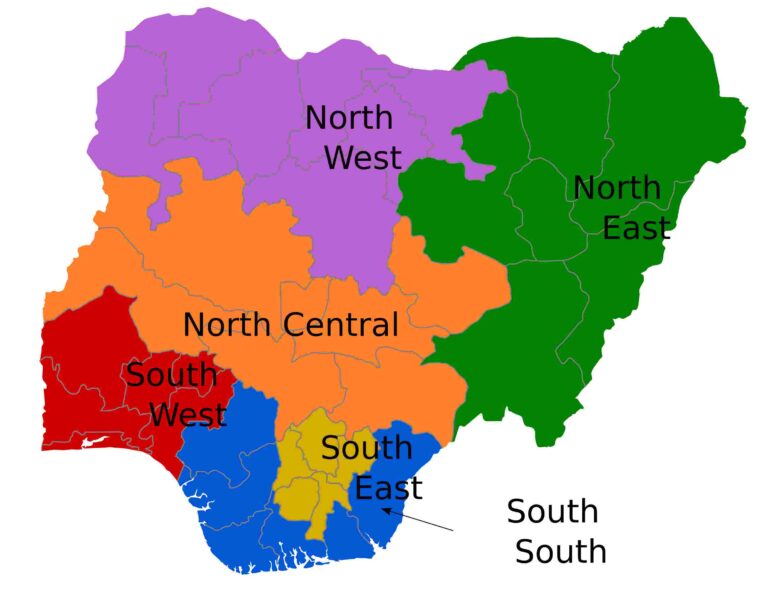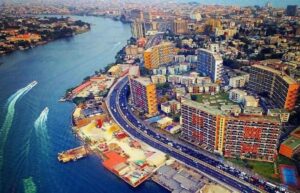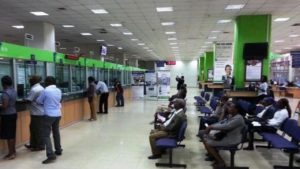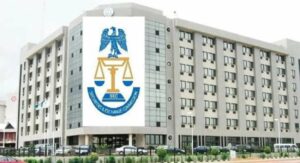Most developed regions in Nigeria (Geopolitical zones)

Nigeria is made up of 36 states and a federal capital territory. The country is also divided into six regions, also known as geopolitical zones-the northeast, northwest, north-central, southeast, southwest and south-south regions. These regions are not provided for under any law but have however gained popularity in their use over the years.
The North East region consists of six states: Adamawa state, Bauchi state, Gombe state, Borno state, Taraba state, and Yobe state; the North West region consists of seven states: Kano state, Kaduna state, Sokoto state, Kebbi state, Kastina state, Jigawa state, and Zamfara state; the North Central region consists of six states: Benue state, Plateau state, Nasarawa state, Kwara state, Nigeria state, and Kogi state; the South East region consists of five states: Abia state, Imo state, Anambra state, Ebonyi state and Enugu state; the southwest region consists of six states: Ogun state, Ondo state, Osun state, Oyo state, Lagos state and Ekiti state; and the South South region consist of six states: Rivers state, Cross rivers state, Akwa Ibom state, Bayelsa state, Delta state, and Edo state.
This article provides insight into the most developed regions. This ranking is based on HDI.
The top four most developed regions in Nigeria
1. South West
The South West region is the most developed in the country with the state of Lagos and Ogun claiming a whopping 0.686 and 0.675 development index respectively. Lagos is Nigeria’s most developed state and is the only state on a 0.686 scale. The South West is home to several industries that include food processing, textile, brewery and much more. The South West is also home to some of the strongest services sectors in the country today.
South Western Nigeria states deal in numerous industries including agriculture, manufacturing, trade, real estate, transportation and others. Lagos is currently the strong pull of the southwest’s economy, with trade fostering through to the state of Lagos. The Yorubas are the dominant tribe in the southwest, making up over 75% of the population.
The South West contributes a great deal to the Nigerian economy, especially Lagos, Ogun and Ibadan. The southwest is argued to have an estimated population of over 50 million people, which claims more than 25% of the country’s population.
The largest city in the region is Lagos city, which is also the largest city in the entire African continent. Other major cities in the southwest include Ibadan, Osogbo, Ife, Sagamu, Abeokuta, Akure, Ikeja, Ikorodu, Ado-Ekiti, Ijebu-Ode, Owo and Ilesa. The development index of the South West is 0.643.
2. South South
The South South region comes in second place, with the state of Delta being the most developed state in the region. The contribution of the South South’s economy to Nigeria cannot be overemphasized with a population of over 30 million people, the South South contributes to over 20% of the economy of Nigeria.
Several industries abound in the South South, including petroleum, and petrochemical industries. The south-south is also Nigeria’s oil and gas hub contributing to over 70% of Nigeria’s oil and gas reserves. Other sectors include real estate, entertainment, hospitality, and others. Port-Harcourt and Benin city are the two largest cities in the South South, they are also the fourth and fifth largest cities in Nigeria. The South South has reached considerable development with South South cities like Uyo, Calabar, Asaba, Warri, Ikot-Ekpene, Sapele and Ughelli claiming some of the most beautiful cities positions in Nigeria.
The South South follows the southwest development closely with an HDI of 0.640.
3. South East
The South East is the third most developed region with the highest HDI. The South East is the country’s smallest region in terms of size and population with over 25 million people. Nonetheless, the economy of the South East is amazing with strong indices of a vibrant sector that exceeds some of the biggest economies in Nigeria.
The economy of the South East includes agriculture, oil and gas, trade, real estate, manufacturing, hospitality, entertainment and others. The South East is arguably Nigeria’s most diversified economy dealing in a variety of sectors. After the South South, the South East comes second as Nigeria’s oil and gas hub with states like Abia and Imo controlling over 25% of the country’s oil and gas reserves. The most unique aspect of the South East is the activities of small and medium trade, manufacturing and services within the region, these activities have reduced poverty to the barest minimum and have also contributed greatly to the overall economy of the South East.
In mining, the South East extracts minerals from sandstone, bauxite, coal, limestone, iron ore and others. Aside from Ebonyi state, all states of the South East states make it to the top ten most developed states in Nigeria. The largest cities in the South East are Aba and Onitsha, which both account for over 20% of the entire South East population and are the tenth and thirteenth largest cities in Nigeria respectively. Other cities in the South East include Enugu, Umuahia, Awka, Owerri, Afikpo, Nnewi, Okigwe, Abakaliki, and Nsukka. The South East has a close HDI to the South West and the South South South with an HDI of 0.638.
4. North Central region
The fourth most developed region is the North Central region of Nigeria. The North Central region’s economy is influenced by agriculture, mining, trade, and others. The North Central region has a population of over 30 million people.
The most developed state in the region is Benue with a development index of 0.609. The largest cities in the North Central are Ilorin and Jos, accounting for a bulk of the North Central population. Other cities include Markurdi, Lokoja, Lafia, and Minna.
Abuja, Nigeria’s capital city is located in this region.
The HDI of the north-central region is 0.567.
Conclusion
The six regions in Nigeria arguably contribute in varying ways to the Nigerian economy. Nonetheless, the top four developed regions all have standard-based economic output. The South of Nigeria is the most developed region in the country beating the nation’s entire North by far. The North Central stands as the most developed region in the Northern part of the country, other regions following are the North West at fifth place and the North East at sixth place.
Don't miss a thing. Follow us on Telegram and Follow us on WhatsApp. If you love videos then also Subscribe to our YouTube Channel. We are on Twitter as MakeMoneyDotNG.





